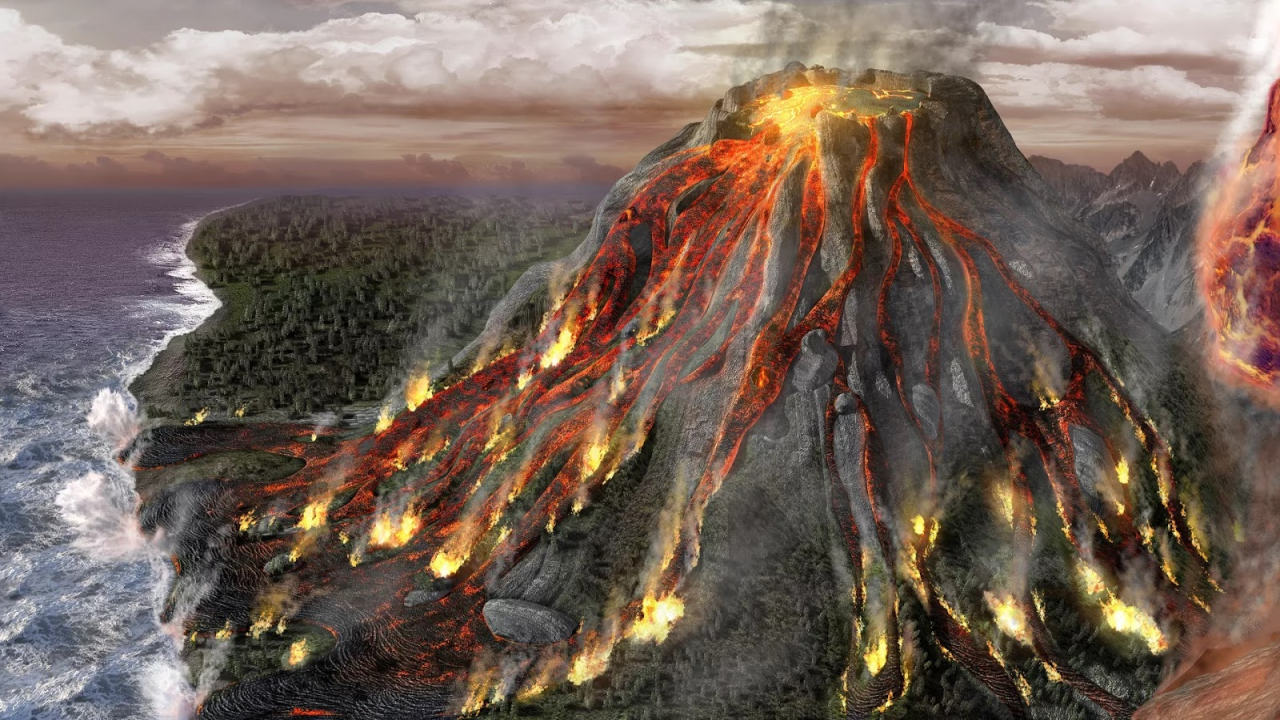Vulcanicity
Vulcanicity refers to the process of the Earth’s crust releasing molten rock or magma from its interior. This can occur in the form of volcanic eruptions, lava flows, and the formation of igneous rock formations. Vulcanicity plays a significant role in shaping the Earth’s surface and creating new land formations. In this article, we will explore the various subtopics related to vulcanicity.
Types of Volcanoes
Volcanoes are the most recognizable form of vulcanicity. They are classified into three types based on their shape and eruptive behavior: shield volcanoes, stratovolcanoes (also known as composite volcanoes), and cinder cones.
- Shield volcanoes are characterized by their low profile and broad shape, formed from the accumulation of thin layers of lava. They have relatively gentle eruptions and are found predominantly at divergent plate boundaries, such as the Mid-Atlantic Ridge.
- Stratovolcanoes, on the other hand, are tall, cone-shaped volcanoes formed by the accumulation of thick layers of lava, ash, and other volcanic debris. They are found at subduction zones, where one tectonic plate is being forced beneath another. These volcanoes are known for their explosive eruptions and can cause significant damage and loss of life.
- Cinder cones are smaller volcanoes formed by the accumulation of volcanic ash and cinders around a single vent. They are found at both divergent and convergent plate boundaries and are typically associated with short-lived, explosive eruptions.
Causes of Volcanic Eruptions
Volcanic eruptions occur when pressure builds up in the magma chamber beneath the Earth’s surface, forcing the molten rock to rise and eventually escape through a vent or fissure in the Earth’s crust. There are several factors that can contribute to the buildup of pressure in the magma chamber, including the composition of the magma, the presence of dissolved gases, and the movement of tectonic plates.
The composition of the magma can affect the explosiveness of volcanic eruptions. Magma with a high viscosity, such as andesite or rhyolite, tends to trap gases and form plugs that can result in explosive eruptions. In contrast, magma with low viscosity, such as basalt, allows gases to escape more easily and results in less explosive eruptions.
The presence of dissolved gases in magma, such as water vapor, carbon dioxide, and sulfur dioxide, can also contribute to volcanic eruptions. As the magma rises and pressure decreases, these gases expand and can cause the magma to fragment and explode.
Finally, the movement of tectonic plates can cause magma to rise and contribute to volcanic eruptions. Convergent plate boundaries, where one plate is forced beneath another, can cause the formation of magma chambers and the subsequent eruption of stratovolcanoes. Divergent plate boundaries, where plates are moving apart, can create magma through decompression melting and result in the formation of shield volcanoes.
Volcanic Hazards
- Volcanic eruptions can have significant impacts on both the environment and human populations. The hazards associated with volcanic eruptions include lava flows, pyroclastic flows, ashfall, and volcanic gases.
- Lava flows are the most visible and recognizable hazards associated with volcanic eruptions. They can cause damage to buildings and infrastructure and can be deadly if they come into contact with human populations.
- Pyroclastic flows, also known as volcanic avalanches, are fast-moving clouds of ash, rock fragments, and gas that can reach speeds of up to 700 km/hour. They are extremely hazardous and can cause significant damage and loss of life.
- Ashfall, which occurs when volcanic ash is ejected into the atmosphere and falls back to the Earth’s surface, can cause respiratory problems and buildings and infrastructure. It can also disrupt air travel and cause power outages.
- Volcanic gases, such as sulfur dioxide and carbon dioxide, can cause respiratory problems and acid rain. They can also have significant impacts on the environment and can contribute to climate change.
Mitigation and Management of Volcanic Hazards
There are several strategies for mitigating and managing the hazards associated with volcanic eruptions. These include monitoring volcanic activity, evacuating populations in high-risk areas, and implementing building codes and land-use policies that consider the risks associated with volcanic hazards. Monitoring volcanic activity involves measuring seismic activity, gas emissions, and changes in the shape of the volcano. This information can be used to predict when an eruption is likely to occur and to inform decisions about evacuations and other emergency response measures.
Evacuation is the most effective way to protect human populations from volcanic hazards. This can involve relocating populations to safer areas or providing temporary shelter for those who cannot evacuate.
Building codes and land-use policies can also help mitigate the hazards associated with volcanic eruptions. For example, buildings can be constructed using materials that are resistant to lava flows or pyroclastic flows, and zoning laws can be put in place to restrict development in high-risk areas.


